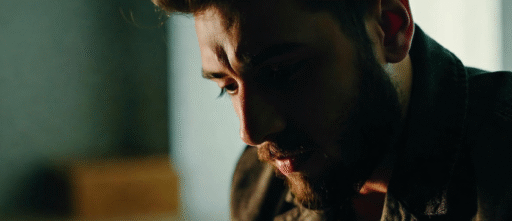Table of Contents
Introduction
Ever wonder why so many people, even smart ones, end up making poor financial choices? It’s not always because of lack of money or knowledge. In fact, many times, the problem runs much deeper — into our emotions, habits, and even the way our brains are wired. Let’s take a real, honest look at what truly drives poor financial decisions and how to spot these hidden triggers before they quietly drain your wallet.
The Emotional Side of Money
Money isn’t just numbers. It’s emotional.
When people feel stressed, lonely, or even overconfident, their judgment about money changes without them realizing it. A bad day can make someone think, “I deserve to treat myself,” and suddenly an impulse buy happens.
Research has shown that emotions like fear, anger, or excitement can heavily influence our financial behavior. For instance, during tough times, fear can make people sell their investments too early. On the flip side, excitement can push someone to take unnecessary financial risks — like investing in something they barely understand.
Here’s something interesting: our brains release dopamine when we make purchases, the same chemical that triggers pleasure. That small rush from buying something new makes it hard to stop, even when we know it’s not a smart decision.
Lack of Financial Education
Many poor financial choices happen because people were never taught how to manage money properly.
Most schools don’t teach how to budget, save, or invest. So, when people grow up, they learn about money through trial and error — and often, through mistakes.
Without understanding interest rates, credit cards, or the long-term effects of debt, people make decisions that seem fine at the moment but have lasting consequences.
Take this example: someone might pay the minimum on their credit card bill thinking it’s okay. But what they don’t realize is that the remaining balance keeps growing due to high interest. Within months, they’re trapped in a financial loop that’s hard to escape.
| Mistake | Why It Happens | Consequence |
|---|---|---|
| Paying only credit card minimum | Misunderstanding interest | Growing long-term debt |
| Ignoring budgeting | No financial planning habit | Overspending |
| Not saving early | Lack of awareness | Missed investment opportunities |
Impulse Buying and Instant Gratification
We live in a world of “Buy Now” buttons and one-tap payments. It’s easier than ever to spend money — and harder than ever to stop.
Instant gratification is one of the biggest reasons people fall into poor financial habits. The brain craves quick pleasure, not long-term security.
You might have noticed how social media and online ads target emotions — they show you what you “deserve,” what’s “trending,” or what everyone else is buying. These triggers push people to spend on things they never planned for.
Here’s a little truth: the less time you spend thinking before buying, the higher the chance it’s an emotional purchase.
Try this: whenever you want to buy something non-essential, wait 24 hours. If you still feel you need it after that, go ahead. Most people realize they don’t.
Peer Pressure and Social Influence
Even adults are not immune to peer pressure — it just looks different.
We see friends posting vacations, new gadgets, or luxury items online, and subconsciously we want the same. This “comparison trap” leads people to overspend just to fit in or keep up appearances.
It’s known as social proof — when people make decisions based on what others are doing. And unfortunately, it’s a hidden driver of poor financial choices.
Here’s an example:
A person might buy a car they can’t afford because everyone in their circle drives one. Or they might spend more on a wedding because of what’s expected by family or society.
But in the end, the emotional satisfaction fades while the financial stress remains.
Overconfidence and the Illusion of Control
Sometimes, poor financial choices come from too much confidence, not too little.
People often believe they can “handle it later” — whether it’s paying back a loan, managing credit card debt, or predicting stock market movements. This illusion of control leads them to underestimate risks.
For example, someone might take a high-interest loan assuming they’ll pay it off soon, or invest in a friend’s startup without doing proper research. It’s not bad intentions — it’s misplaced confidence.
Overconfidence can also make people ignore professional advice, thinking they know better. But as history shows, even experienced investors can make big mistakes when emotion clouds logic.
Neglecting Long-Term Planning
A huge reason behind poor financial choices is short-term thinking.
People tend to prioritize immediate comfort over future security. Saving for retirement feels less urgent than buying a new phone today.
This behavior is called present bias — the tendency to focus on what feels good now rather than what’s beneficial later.
The sad truth? Many realize too late that they never built an emergency fund or retirement savings. It’s not that they didn’t earn enough — it’s that they didn’t plan well enough.
Marketing Manipulation and Hidden Triggers
Modern marketing is powerful and subtle.
Brands use psychology to make people spend more. From “limited-time offers” to “free shipping above $50,” these triggers push customers toward impulse decisions.
Even colors and fonts are chosen to create emotional responses. For example:
- Red is used to create urgency.
- Blue builds trust.
- Green often signals “good deals.”
It’s no surprise then that many poor financial choices happen because people are unknowingly influenced by these triggers every day.
| Marketing Trick | Psychological Effect | Result |
|---|---|---|
| “Limited offer” | Creates urgency | Impulse buying |
| “Only 2 left!” | Fear of missing out | Quick decisions |
| “Buy one get one” | Feeling of saving | Overspending |
Debt Normalization
In many societies today, debt has become normalized. Having multiple credit cards, car loans, or “buy now, pay later” plans feels routine. But this normalization hides the real cost.
People forget that debt is borrowing from your future income — and future stress. When managed poorly, it snowballs fast.
The problem isn’t using credit — it’s misusing it. Buying wants instead of needs, without planning how to repay, leads to endless cycles of poor financial choices.
Lack of Self-Awareness and Money Mindset
At the core of financial behavior lies mindset.
Some people grow up believing money is hard to earn and easy to lose, while others think spending equals happiness. These beliefs shape every decision they make — often subconsciously.
Developing financial self-awareness means asking yourself:
- Why do I spend the way I do?
- What emotions drive my money habits?
- Am I buying things or buying feelings?
The more you understand your relationship with money, the easier it becomes to make better choices.
Break free from the paycheck-to-paycheck cycle! Here’s how to stop living paycheck to paycheck.
Breaking the Cycle
Here’s the good news — awareness changes everything. Once you understand what triggers poor financial choices, you can start changing them one step at a time.
Try these practical strategies:
- Track your spending – Awareness is power.
- Set small financial goals – Achievable steps build confidence.
- Limit emotional shopping – Wait before buying.
- Build an emergency fund – It prevents panic decisions.
- Educate yourself – The more you learn, the fewer mistakes you make.
Remember, financial success isn’t about perfection — it’s about progress.

FAQs about Poor Financial Choices
Q1: Why do smart people still make poor financial choices?
Because intelligence doesn’t always control emotion. Even highly educated people can let feelings, habits, or overconfidence override logic.
Q2: How can I stop impulse spending?
Start by identifying your triggers. Avoid shopping when you’re emotional, unsubscribe from marketing emails, and use the 24-hour rule before buying anything non-essential.
Q3: Is debt always bad?
Not always. Productive debt, like student loans or business investments, can be useful if managed wisely. The problem begins when debt funds lifestyle, not growth.
Q4: What’s the first step to fixing poor financial habits?
Awareness. Track your money flow for one month — you’ll quickly see patterns that can be corrected with simple adjustments.
Q5: How can social media affect financial decisions?
Social media creates unrealistic comparisons. Seeing others’ luxury lifestyles can pressure you into spending beyond your means, even subconsciously.
Final Thoughts
Poor financial choices aren’t just about money — they’re about mindset, emotions, and habits built over time. Once you uncover these hidden triggers, you gain control over your financial life.
Every small step — whether it’s saying no to an impulse buy or saving a little more each month — adds up to big change. So next time you reach for your wallet, pause for a moment and ask: “Am I buying this because I need it… or because it feels good right now?”
That one second of awareness can save you from years of financial regret.







